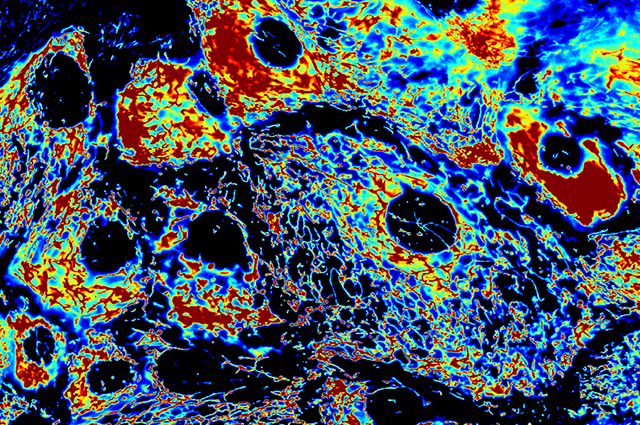Mitochondria expose tumors’ misbehavior

Mitochondria are able to change function and shape, according to the needs of the cell. When these mitochondrial dynamics go wrong, though, they can contribute to a number of human diseases. Early detection of these abnormalities can lead to faster diagnosis and treatment. A team of researchers, including engineers from the Tufts Department of Biomedical Engineering, has shown that these signs of mitochondrial dysfunction can be seen in living human skin by monitoring the mitochondrial metabolic coenzyme NADH. This represents a significant step from current techniques, which rely on mitochondria-specific dyes or are invasive.
With this new technique allowing for near real-time assessments of mitochondrial organization, researchers were able to differentiate healthy skin from melanoma and basal cell carcinoma. They published their findings in Science Translational Medicine.
Authors included Dimitra Pouli, Carlo Alonzo, Zhiyi Liu, Kyle Quinn, and Associate Professor Irene Georgakoudi from the Tufts Department of Biomedical Engineering, working alongside colleagues from the University of Malaga and the University of California, Irvine.
Department:
Biomedical Engineering